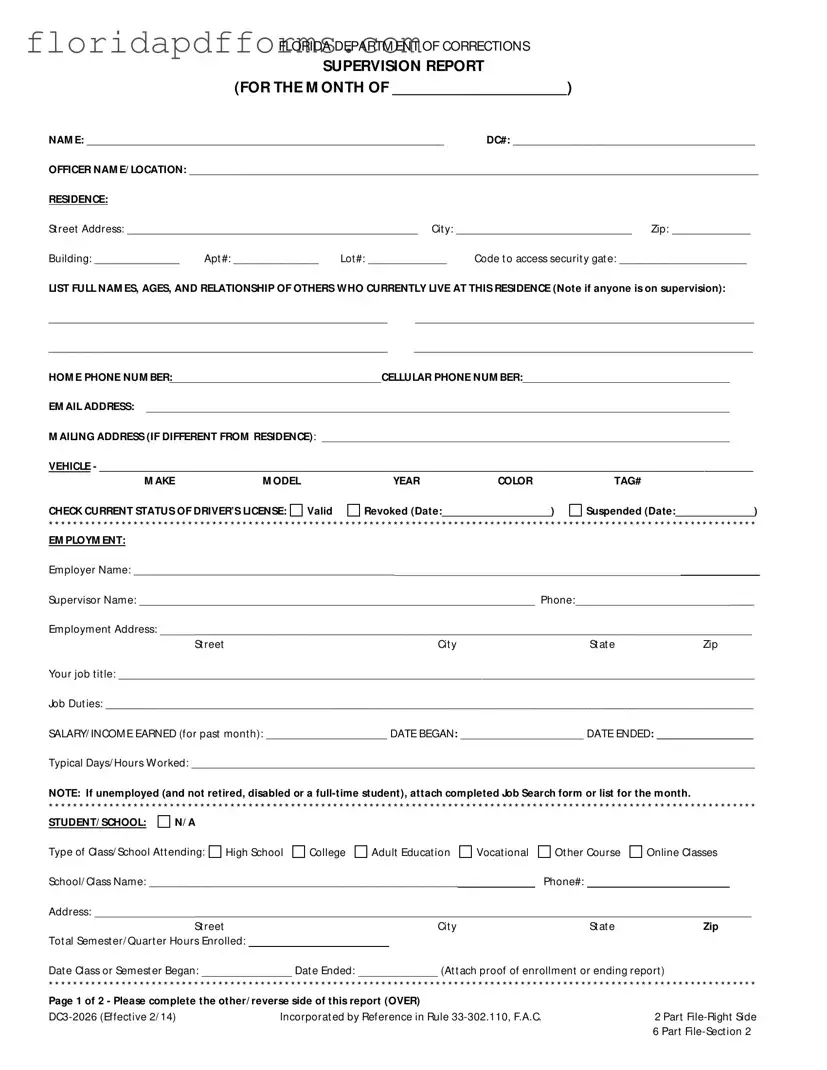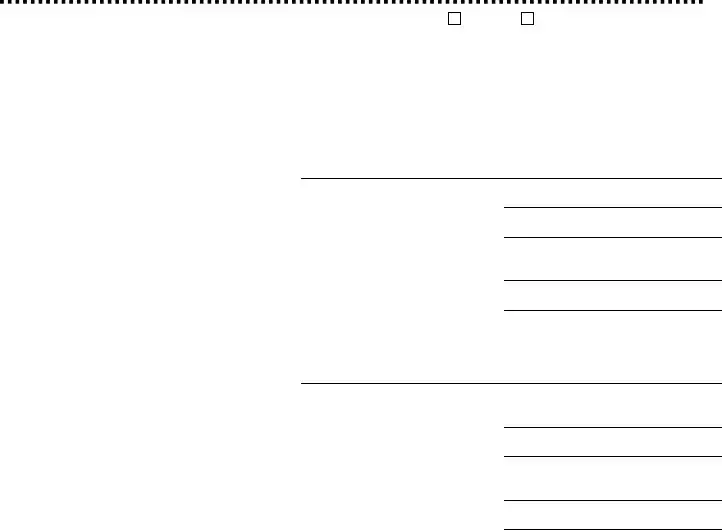The Florida Supervision Report form shares similarities with the Monthly Probation Report, which is used in various states to monitor individuals on probation. Both documents require the individual to provide personal information, including their residence, employment details, and any interactions with law enforcement. The Monthly Probation Report also typically includes sections for reporting compliance with probation conditions and any progress made toward rehabilitation goals, mirroring the structure and intent of the Florida Supervision Report.
Another document akin to the Florida Supervision Report is the Parole Progress Report. This report is essential for individuals released on parole, allowing them to demonstrate compliance with the terms of their release. Like the Florida Supervision Report, the Parole Progress Report includes sections on employment, residence, and any required community service. Both documents aim to provide a comprehensive overview of the individual’s activities and compliance with supervision conditions.
The Community Service Report is also similar in purpose and structure. This document is used to track the hours and nature of community service completed by individuals under supervision. It typically requires detailed information about the service performed, which aligns with the Florida Supervision Report’s focus on special conditions and progress made. Both documents emphasize accountability and community engagement as part of the rehabilitation process.
In addition, the Treatment Progress Report bears resemblance to the Florida Supervision Report. This document focuses on individuals undergoing treatment for substance abuse or mental health issues. It requires details about attendance, progress, and any setbacks experienced in treatment. Both reports emphasize the importance of addressing underlying issues that may contribute to criminal behavior, fostering a holistic approach to rehabilitation.
The Employment Verification Form is another document that aligns with the Florida Supervision Report. This form confirms an individual’s employment status and details their job responsibilities. Similar to the employment section in the Supervision Report, it requires information about the employer, job title, and salary. Both documents serve to ensure that individuals are maintaining stable employment, which is crucial for successful reintegration into society.
The Educational Progress Report is also comparable, particularly for individuals enrolled in educational programs. This report tracks academic achievements and attendance, akin to the educational section in the Florida Supervision Report. Both documents aim to support individuals in their pursuit of education as a means of personal growth and reducing recidivism.
The Substance Abuse Assessment Report shares similarities as well. This document evaluates an individual’s substance use and outlines recommendations for treatment. Like the Florida Supervision Report, it focuses on compliance with treatment recommendations and progress made. Both emphasize the importance of addressing substance use issues as part of the supervision process.
The Family Contact Report is another related document. It details the relationships and support systems surrounding an individual under supervision. Similar to the section in the Florida Supervision Report that asks for information about household members, this report aims to assess the individual’s support network and its impact on their rehabilitation journey.
The Compliance Report is also relevant. This document tracks an individual’s adherence to the terms of their supervision, including payments, community service, and treatment attendance. It serves a similar purpose to the Florida Supervision Report by documenting progress and areas needing improvement, thereby holding individuals accountable for their actions.
Lastly, the Risk Assessment Report is comparable, as it evaluates the likelihood of reoffending. This document often accompanies supervision reports and provides insights into the individual’s behavior and compliance. Both reports aim to inform decisions regarding supervision levels and necessary interventions, ensuring a tailored approach to each individual’s rehabilitation.


